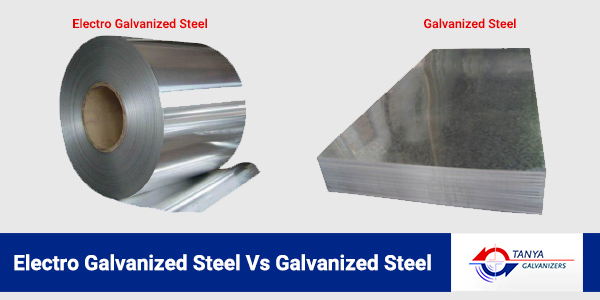Suggested Topic: Know the Differences Between Electro Galvanised Steel and Galvanised Steel
Galvanization is the process where you apply a protective coating of zinc on the iron or steel to prevent it from rusting. While doing this method, one should take proper care of the same. This process can be hazardous to the person if not done correctly. It will also cause damage or malfunction of the equipment, instrument, and many more.
Before choosing the process, one must indulge in thorough research and understand the difference between electro-galvanized steel and galvanized steel. Knowing the difference can help a person to be safe while selecting the right and most appropriate method and product according to the specific requirement and needs of the business. Otherwise, it can just be a waste of money and time.
Difference between electro-galvanized steel and galvanized steel
Here are some basic differences between galvanized steel and electro-galvanizing.
- In the case of galvanized steel, one needs to follow up a rigid cleaning process. This process is also known as the 7-bath process. But when it comes to electro-galvanizing, one need not have to follow such stringent cleaning methods.
- To achieve the galvanized steel coating, the steel is said to get dipped in the molten zinc bath at a temperature variation of 460° c. But for the electro galvanization, the steel gets prepared in a cathode in the electrolytic cell that forms a coating while using the electroplating process.
- Electro-galvanizing indeed has a very low life ranging from several months to a few years. But in the case of galvanized steel, the average lifespan is between 20 years to 50 years. However, electro galvanization produces an excellent finish. But the galvanized steel offers an unpleasant and dull finish.
- Above all, the coating thickness of the galvanized steel is about 80 to 100um. Also, the thickness depends entirely upon the dipping duration. The composition and the roughness of the steel affect the same. When it comes to electro galvanization, the coaching thickness is about 10 to 12 um. The current density and the temperature of the electrolyte determine the thickness of the coating in this case.
- The galvanized steel offers a non-uniform coating. But in the case of electro-galvanized steel, one can expect a uniform coating.
Cost
When it comes to the cost, galvanized steel, having a normal coat thickness, becomes 40% more expensive than electro-galvanized steel. The electro-galvanized steel has a normal coat thickness, which makes it a lot affordable. The cost happens to increase proportionately with the higher coating thickness.
It becomes extremely necessary for a person to choose a reputed company to select either electro-galvanized steel or galvanized steel to get top-class service.
Why Choose Tanya Galvanizers
Tanya Galvanizers provides the best quality service and products according to your needs and requirements. Whether it is electro-galvanized steel or galvanizing steel, we are the leading name in the market.
Since we have decades of industry experience, we provide the best solution for your requirement. If you are looking for either electro-galvanized steel or galvanized steel, we would be happy to help you.
